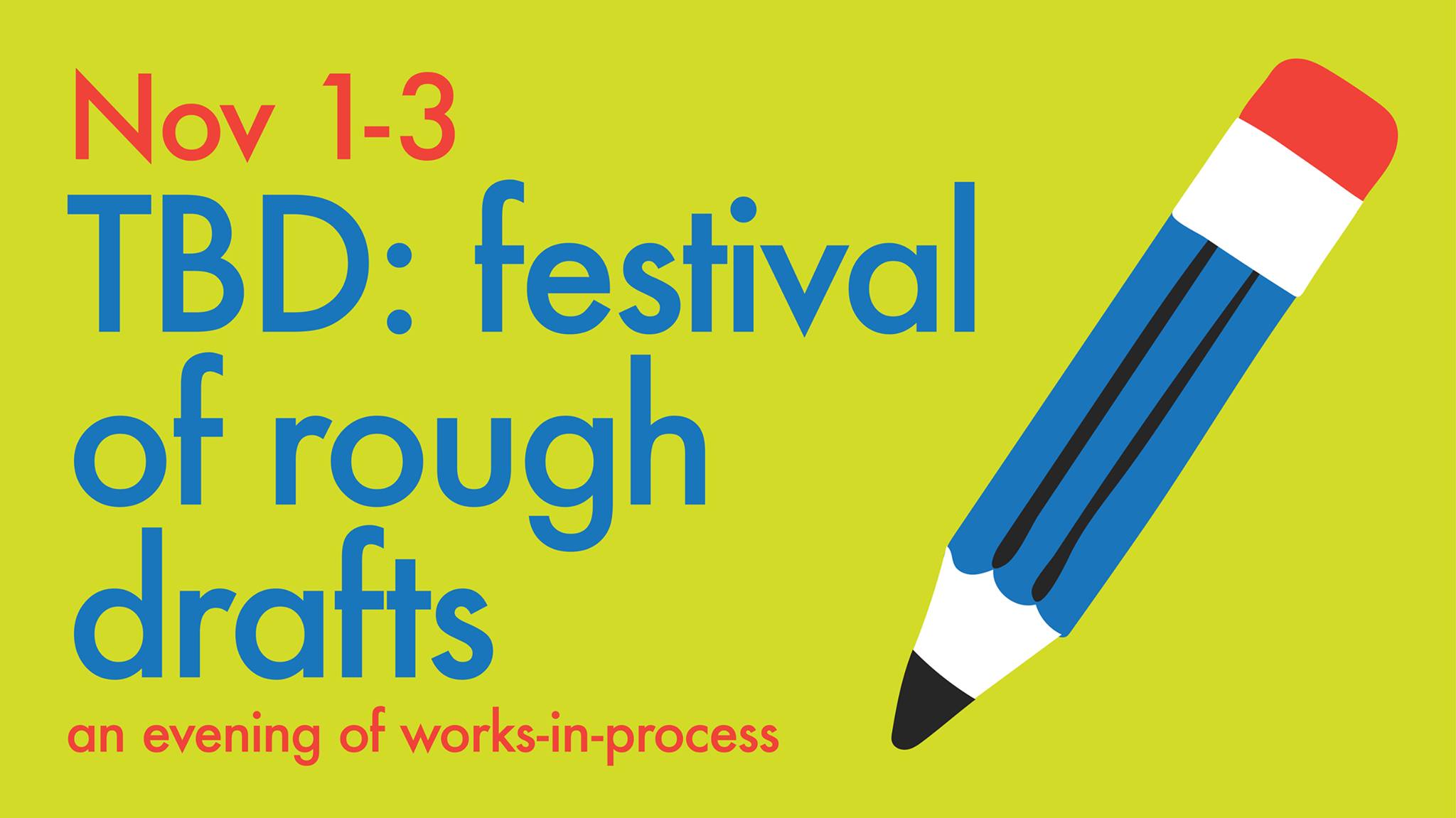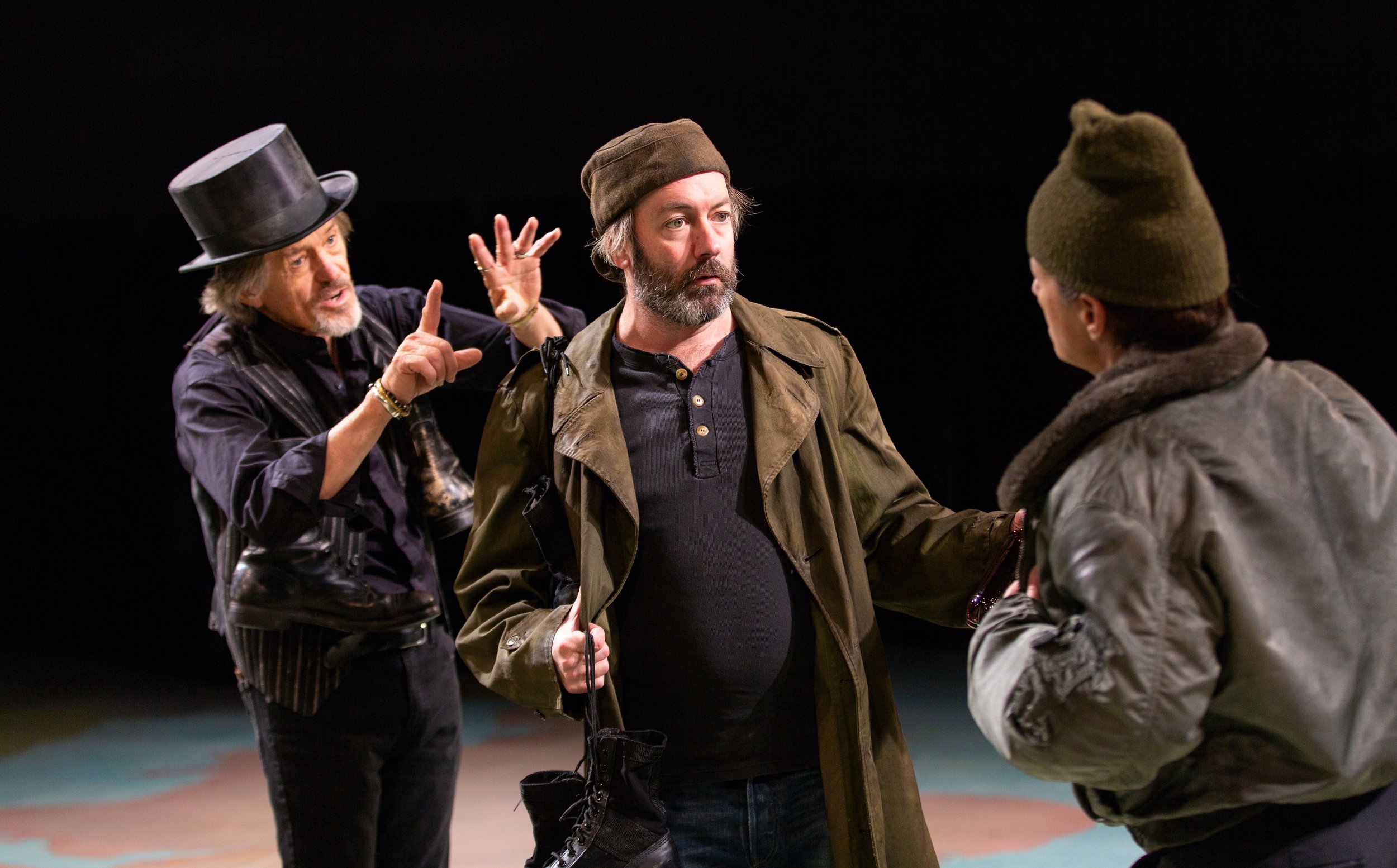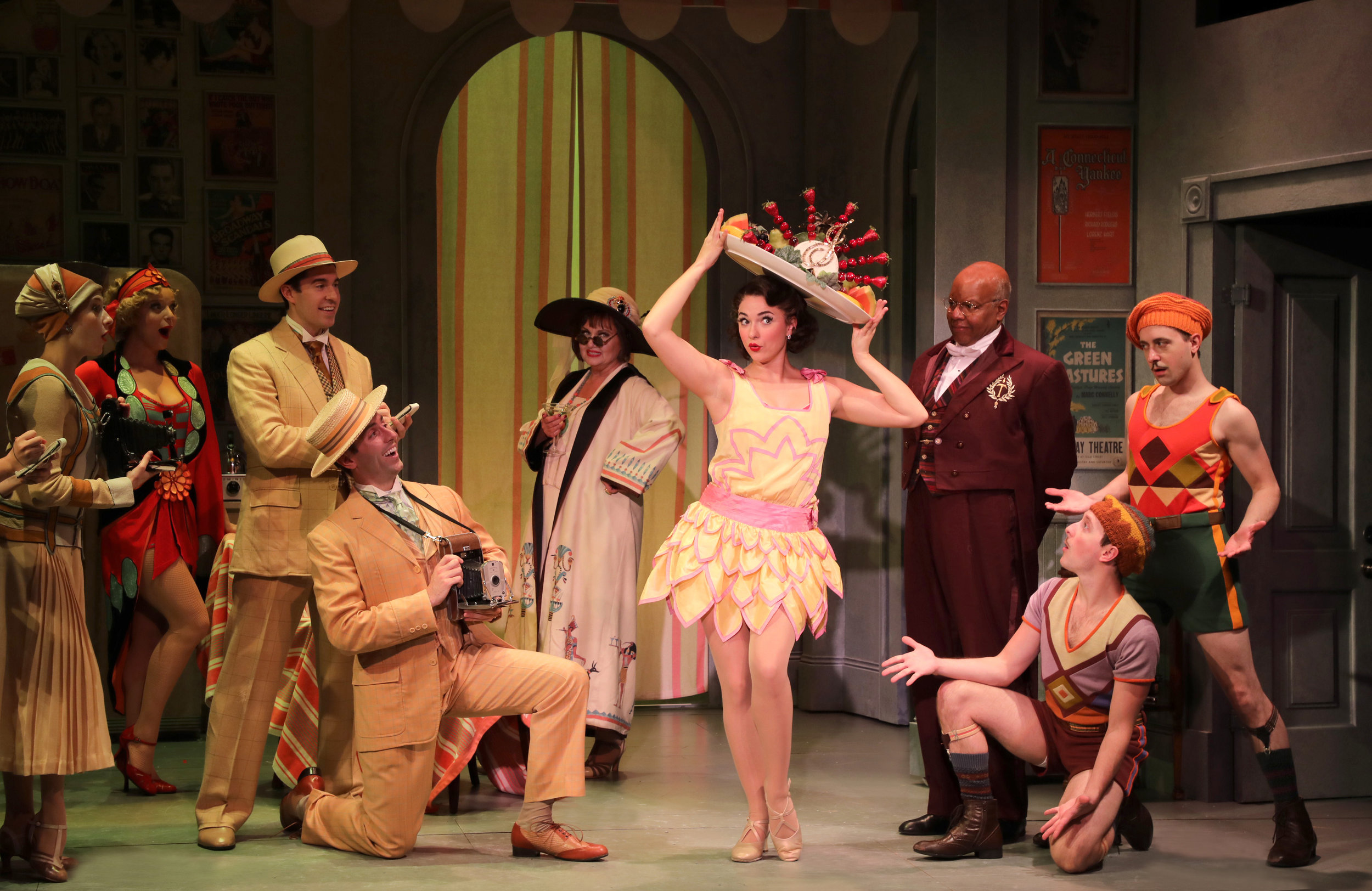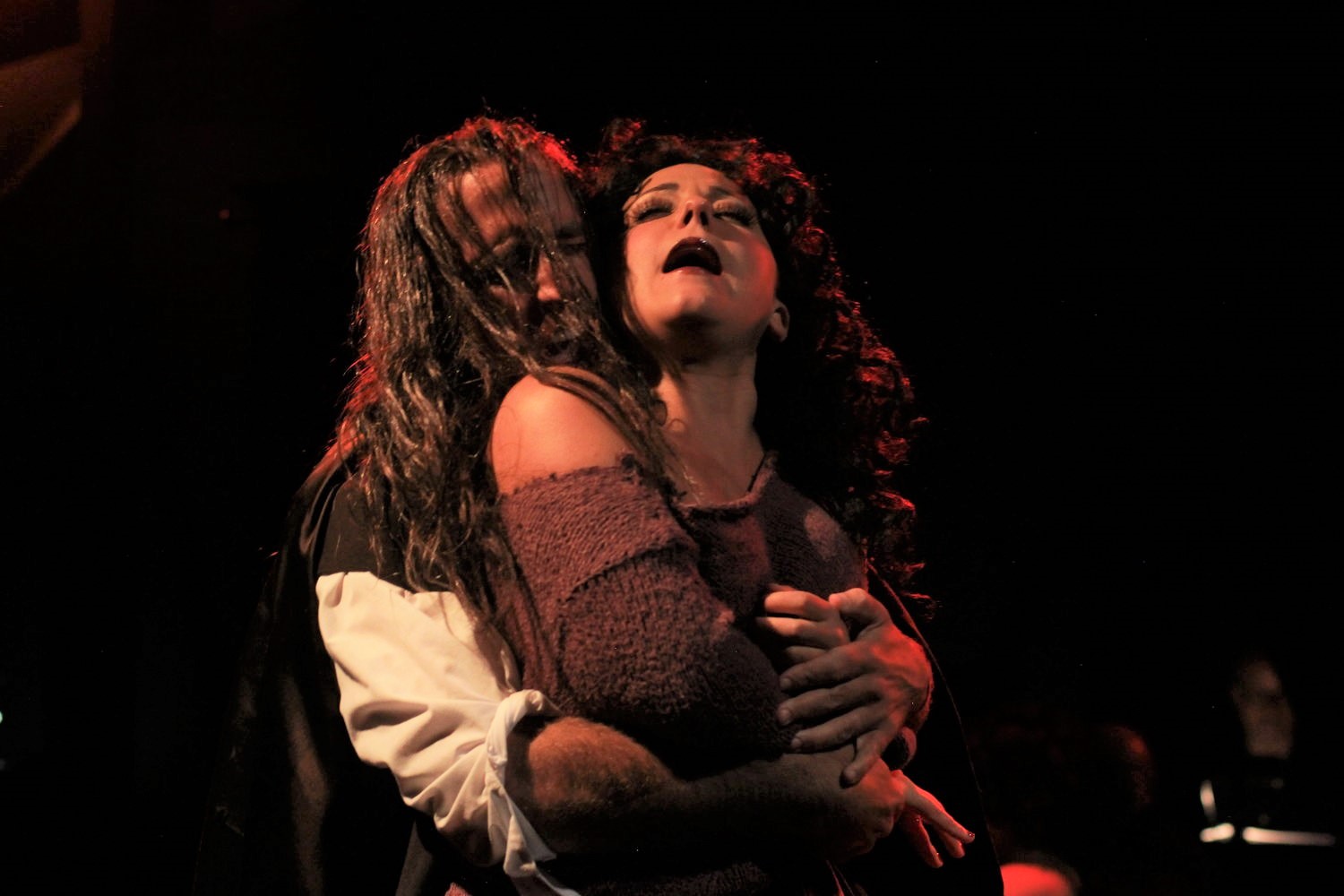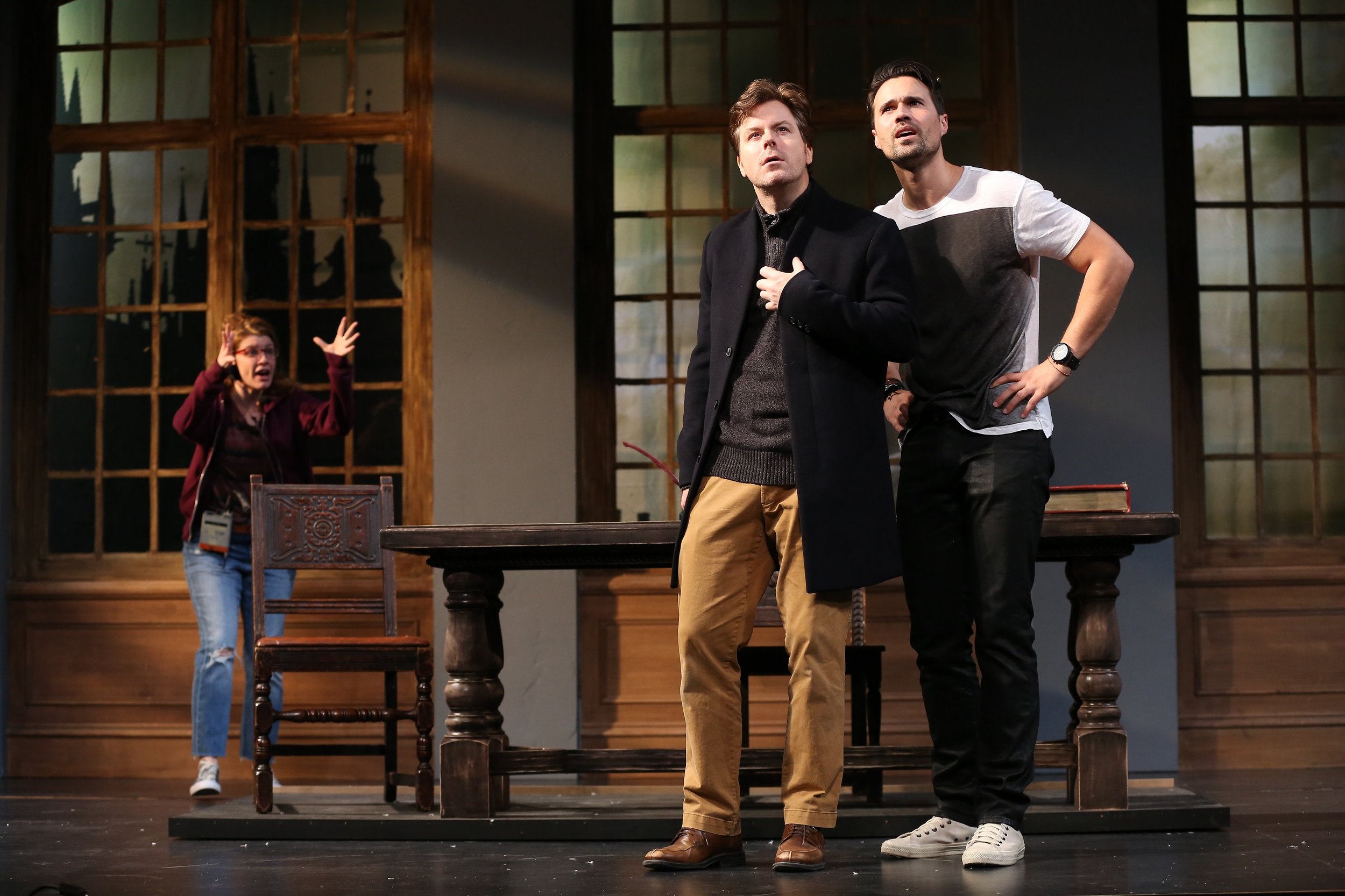Review of TBD: Festival of Rough Drafts, Yale Cabaret
This week, the Yale Cabaret’s co-artistic directors Molly FitzMaurce and Latiana “LT” Gourzong offer their fellow Yale School of Drama students an opportunity to try out before audiences works that are still “in process.” On each table at the Cabaret are questionnaires and index cards inviting commentary and input from the audience. The five presentations on the program feature students working outside the area of their study at the School.
As described by FitzMaurice and Gourzong in the playbill: a playwright, Benjamin Benne, and a dramaturg, Sunny Jisun Kim, become “devisers and puppeteers” in “light+shadow demo (mvmts i-iii)”; an actor, Rachel Kenney, tries her hand as the playwright of an untitled play; Samuel Kwan Chi Chan, a lighting designer, presents a multimedia show, “LXB O.1”; scenic designer Jimmy Stubbs enacts an unusual performance of Ravel’s Bolero; and costume designers Mika H. Eubanks and April M. Hickman act as talk show participants in “The Weaknesses of Men.” The watchword of the night is “process.” All of the works evolve through the necessary addition of an audience.
In a sense, the Festival is, in miniature, an overview of the offerings of a typical Cabaret season. Scripted plays with characters rub against multi-media pieces, and alternate with devised pieces that showcase their creators in a variety of performance styles. One key aspect of the Cab is its ability to provide space for examples of interpretive theater. Such pieces, as in “light+shadow demo,” often involve movement, mime, puppets, music and interesting props. Here, an exploration of light and space is made more tangible by a Chinese lantern, by wands of shiny strands and by papier-maché masks with lights affixed to them. The actions by Benne and Kim, hypnotic in themselves, become more interesting once they’ve donned masks and taken on particular postures trying to articulate an almost anthropological sense of being.
Kenney’s untitled play features Juliana Aiden Martínez as Tory, a college student visiting her grandmother Leanna (Caitlin Crumbleholme) who may be having problems with her memory—she answers the door knife in hand and treats Tory as a stranger at first—and eventually sharing laughs with her former bestie Sam (Awa Franklin). An amusing episode of breast-naming leads to a promise of greater intimacy, with Martínez’s Tory seeming to go through mood-swings that, perhaps, the full plot would help us grasp.
It’s hard to describe Jimmy Stubbs’ one-man interpretation of Ravel’s Bolero. The questionnaire asks us to define “virtuosity,” a nod to the notion of a virtuoso as someone fully versed in a variety of musical forms. Stubbs, in a tux with a music stand, assays Ravel’s well-known piece by means of whistling, playing a ukulele, and tap-dancing. In what was easily the most entertaining entry in the Festival, he shows-off an usual skill as though an entrant in a pretentious talent show, his stage persona full of a preening insistence on solemnity while eliciting numerous laughs.
The other two presentations in the Festival are even harder to get a handle on. Samuel Kwan Chi Chan’s “LXB O.1” solemnly revisits the protests in Tiananmen Square of 4 June 1989 in the light of the 2017 death, from liver cancer, of Nobel Laureate and Chinese political prisoner Liu Xiaobo. The multi-media aspects of the show include brief internet clips about the beloved dissident as well as a computer-generated version of his face that moves its mouth while a voice reads from a script. The script tells of a dinner party where the speaker and his wife meet with casual attitudes toward the political crisis of 4 June, now fading into history. The speaker seems both critical of China and defensive about its autonomy. The reading is elusive and, without any effort to dramatize the scene, there is not much to take away beyond high-minded calls for liberty and equality.
The notion that “the weaknesses of men” might be addressed by reading from notecards about “worst date” experiences could be revealing, appalling, entertaining, perhaps some mix of all three. On the night I attended, Hickman and Eubanks, friendly and amused, didn’t quite manage to click with a story compelling enough to merit the attention given a staged event. The title of the piece borrows from an early 20th-century tract on how to promote virility in men (one assumes, against impotence and behaviors deemed effeminate), but Eubanks and Hickman take the title as a means to “deconstruct the patriarchy.” Fine, but we don’t hear anything about manly weakness, either as physical condition or moral failing. Rather, the shared stories tell more about the weakness of women in drinking / dating / texting against their better judgment. Reprehensible male behavior is described, though with a somewhat gleeful sense of exploring “worst” behavior as a form of competition for best morning-after story. A better title for the piece might be “The Weakness for Men.”
As with The Untitled Ke$ha Project, which featured a competitive aspect with audience participation, the Cabaret from time to time lives up to the notion of cabaret by providing a public performance space to explore the obsessions and interests of YSD students. Hit-and-miss as such productions—or festivals—are, they give a useful glimpse of how theater can evolve out of the everyday while acting as a means to work through the process of living in our moment.
TBD: festival of works-in-process
light + shadow demo (mvmts i – iii)
By Benjamin Benne & Sunny Jisun Kim
Untitled Play
By Rachel Kenney
Cast: Caitlin Crumbleholme, Awa Franklin, Evelyn Giovine, Juliana Aiden Martínez
LXB O.1
Created and presented by Samuel Kwan Chi Chan
Ravel’s Boléro
Performed by Jimmy Stubbs
Dramaturg: Patrick Denney; Costume Design: Meg Powers
The Weaknesses of Men
Conceived by Stephanie Bahniuk, Mika H. Eubanks, & April M. Hickman
Performed by Mika H. Eubanks & April M. Hickman
Festival Team:
Producers: Latiana “LT” Gourzong & Molly FitzMaurice; Stage Manager: Christina Fontana; Technical Director: Tatusya “Tito” Ito; Lighting Designer: Nic Vincent; Associate Lighting Designer: Riva Fairhall; Sound Designer: Yitong (Amy) Huang; Voiceover: Valerie Tu
Yale Cabaret
November 1-3, 2018
